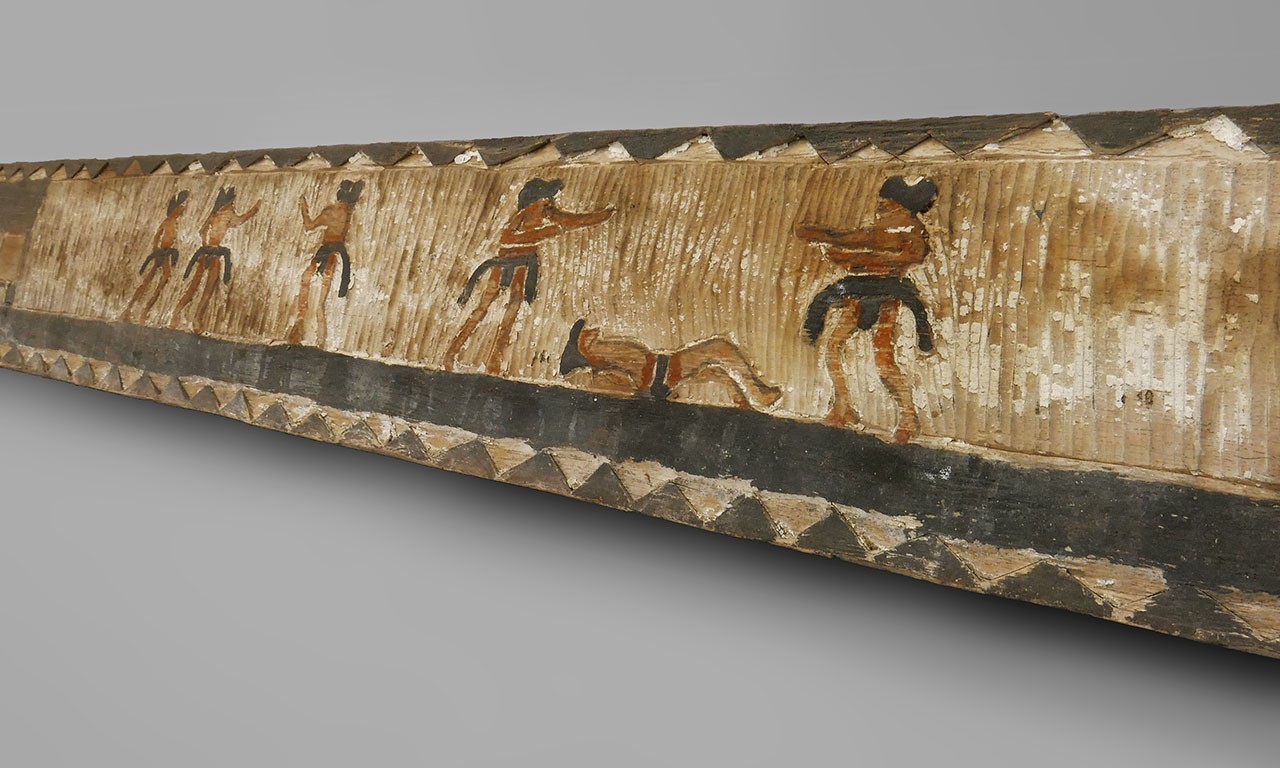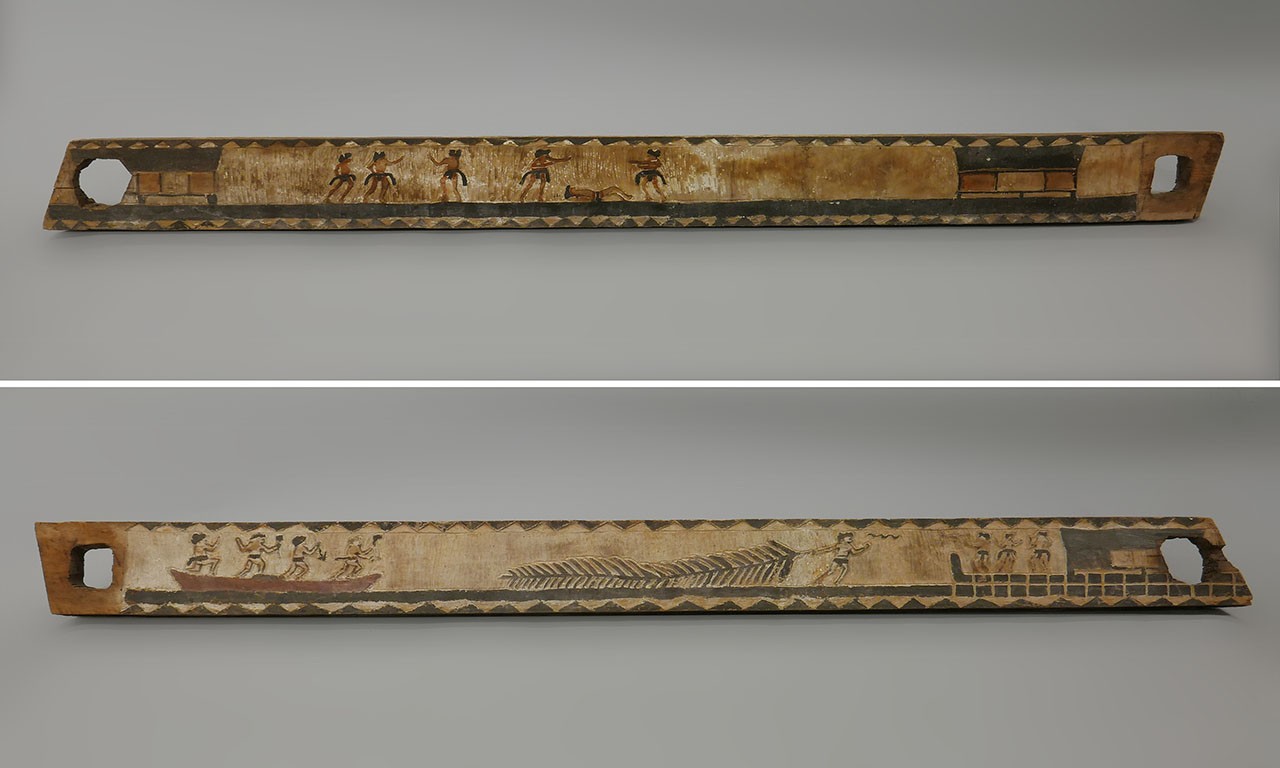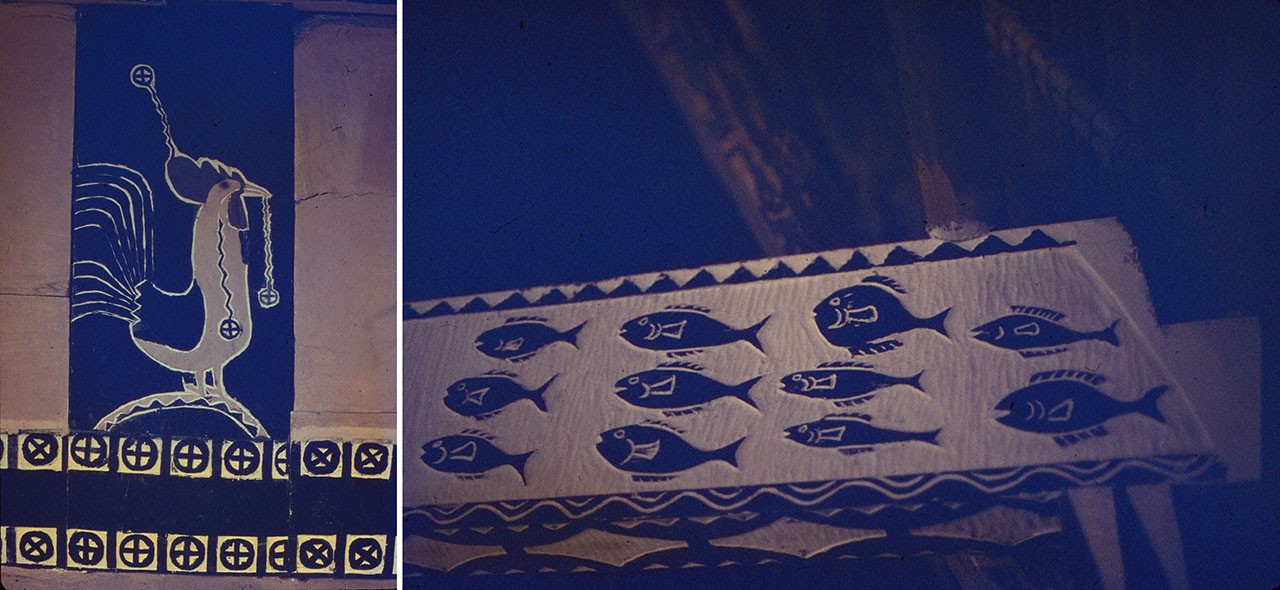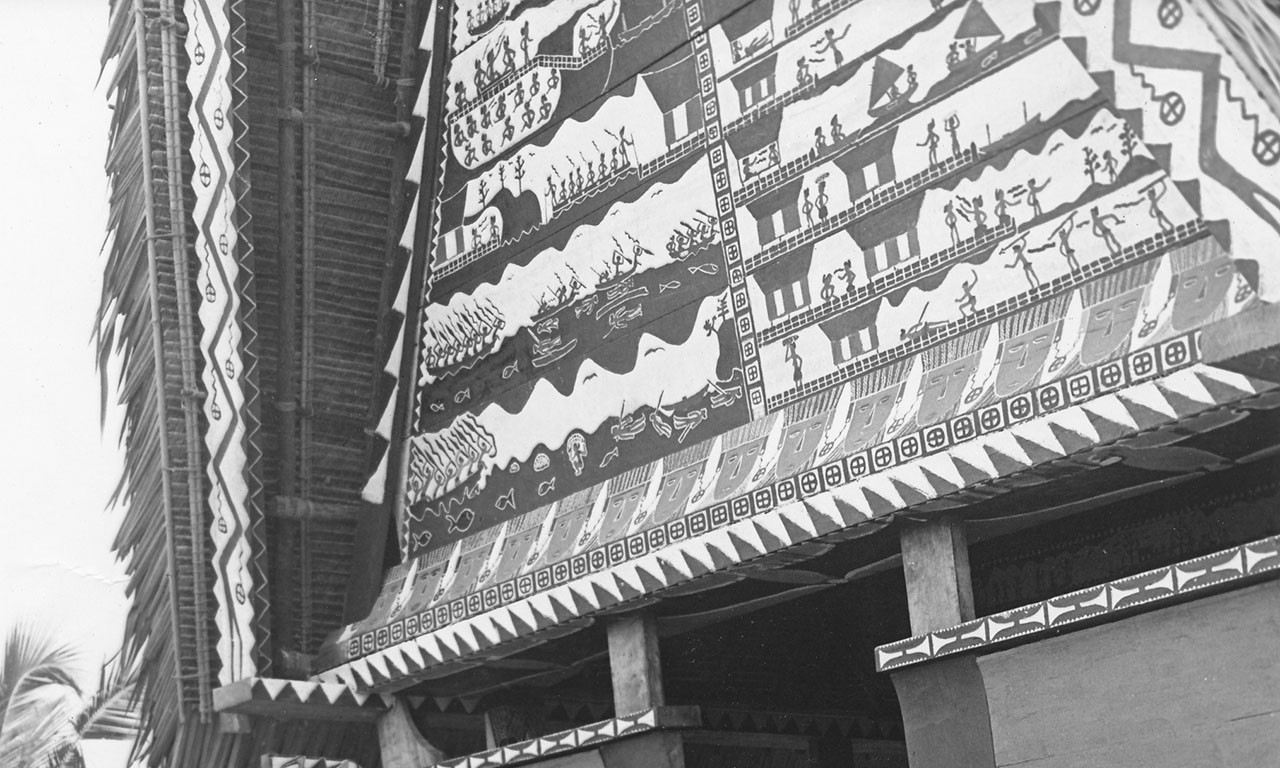2002 North Main Street
Santa Ana, California 92706
TEL: 714.567.3600
History and Symbolism in Palauan Storyboards
 |
| Detail of Storyboard Beam, mid 20th century Palau, Micronesia Wood; 5 7/8 x 77 1/2 x 1 5/8 in. 2019.17.31 Gift of Frieda O. Wray from the Estate of Dr. & Mrs. Douglas and Carolyn Osborne |
Storytelling is Human Culture
Humans have long used art to tell stories, give warnings, and keep records.Asian Comics: Evolution of an Art Form, on display at Bowers until September 8, 2024, explores how art has continued to evolve to tell stories using sequences of images. However, long before moving pictures and printed comics, many cultures around the world developed tools for visual storytelling that are still being employed today: sequences of still images displayed together, one after another, to unveil a narrative or message. One compelling example of this from Bowers’ collection is a wooden storyboard beam from Palau, Micronesia. In this Bowers Blog post, we will discuss the storyboard tradition of the Palauan people, including the history of the practice and the visual symbolism of the tradition.
 |
| Man sitting in bai men’s house in Palau, Micronesia, 1973 or 1975 Image courtesy of Frieda Wray |
Culture Revived
In 2019, Bowers was privileged to accept a collection of Palauan artifacts collected by American archeologists Douglas and Carolyn Osborne between the 1950s and the 1970s. As part of their work, the Osbornes aided in the construction of a traditional men’s house, or bai, discussed in more detail in The Osborne Collection: Return to Palau. Traditionally, bai are adorned with elaborate decorations, most notably storyboard beams which tell legends and other cautionary or historic tales.
The storyboard in Bowers’ permanent collection almost certainly dates to the decades the Osbornes’ spent in Palau, a period of significant change in the island’s history. Palau was occupied by Japan from 1914-1944. During this time, bai storyboards were commodified to sell to tourists, which led to the standardization and creation of smaller, portable versions. Hisataku Hijikata, a Japanese artist and folklorist, was largely responsible for this transition in purpose for the storyboards. He was committed to mimicking style of earlier beams, asking elders to draw the traditional stories, which were then copied by Palauan carvers. The symbols, colors, and art style of the pieces created during this period all closely resembled those of traditional bai storyboards. The storyboard within the Bowers collection, although created after Hijikata’s influence, differs from the portable made-for-export beams in its size and the presence of worn holes on each end of the piece, suggesting that it was likely mounted at one point, possibly in a bai, and subsequently removed.
 |
| Obverse and reverse of 2019.17.31 Gift of Frieda O. Wray from the Estate of Dr. & Mrs. Douglas and Carolyn Osborne |
A Wide Tale
Narrative on storyboard beams or panels can take place across one panel or between multiple panels. The front face of this beam likely depicts the “Story of Ngerubesang,” named after a small village or hamlet in the state of Melekeok. In this humorous story, a group of Ngerubesang fisherman are using a long fishing net when they are suddenly attacked by men from the nearby village of Ngersuul. Some of the fishermen are hurt by weapons, but one escapes, carrying along his now ripped net behind him. As he approached the elders at their bai, he tells them that they are being attacked. The rubak (chief) laughs, thanking the fisherman for the warning, but also commenting that “[his] net must be a very valuable one.”
 |
| Bai men's house exterior and storyboard beam with fish and rooster motifs, Palau, Micronesia, 1975 Image courtesy of Frieda Wray |
Nature as Inspiration
The art found amongst these storyboards is deeply symbolic, representing many aspects of Palauan life and history. Symbols, such as those seen in images taken of bai art by the Osborne family, are used repeatedly throughout the artistic tradition and often have predictable meanings. For example, animals local to the Palauan islands, such as fish and roosters, are both used as characters in the broader settings of storyboards, and as individual decorative motifs. The border designs also carry unique significance. The dark zig-zagged lines depict serrated mats, and the wavy lines (as seen in the fish image) possibly represent ocean waves.
 |
| Palau Museum Bai Palau, Micronesia, 1968-1969 Image courtesy of Frieda Wray |
Money Matters
Found in both traditional and modern styles of bai storyboards, the traditional Palauan money symbol of a circle with an inlaid plus sign is used to decorate the borders of beams or as a motif within illustrated legends. Although in modern times the official currency of Palau is the American dollar, past tradition involved the exchange of several types of objects, including varying beads made of fired clays, stones, minerals, shells, and pearls. The value of the beads was dependent on many factors including their luster, size, color, and shape. The money symbol found within bai art portrays Kalebukub money, the most valuable type of money and the currency of the rubaks.
 |
| Detail of 2019.17.31 Gift of Frieda O. Wray from the Estate of Dr. & Mrs. Douglas and Carolyn Osborne |
The Bowers Anomaly
Many of the symbols and depictions of objects on this beam are uniform across this art form. Similar to how comics customarily represent speech and thought in floating bubbles, dialogue between individuals in Palauan art is always represented by a squiggled line near a speaker’s mouth. The long, feather-like object in the hand of one of one side’s central figure is a woven coconut leaf fishing net. On the far right of the same side, the structure situated on the platform of stones is the typical depiction of a men’s bai house. However, this particular storyboard also is highly unusual with an art style, pigmentation technique, and structural composition that fails to mimic both the modern and traditional approach. Due to the changes in storyboard production during Japan’s occupation of Palau, only a handful of myths tend to be depicted in modern boards. Yet the story told by this beam is uncommon and rarely reported. The clear evidence that this beam was once hung and differs from the smaller, transportable style of Japanese occupation era storyboards also proves to be an interesting detail. These abnormalities leave us with many questions about who created this board and how its unique appearance came to be. Although over time the Palauan storyboard tradition has undergone a stylistic transformation in response to the influence of colonialism, elements of pre-contact practices evidently prevail. In this way, even now, traditional knowledge still finds a way to live on.
Guest written by Laura Chikami. Text and images may be under copyright. Please contact Collection Department for permission to use. References are available on request. Information subject to change upon further research.

Comments